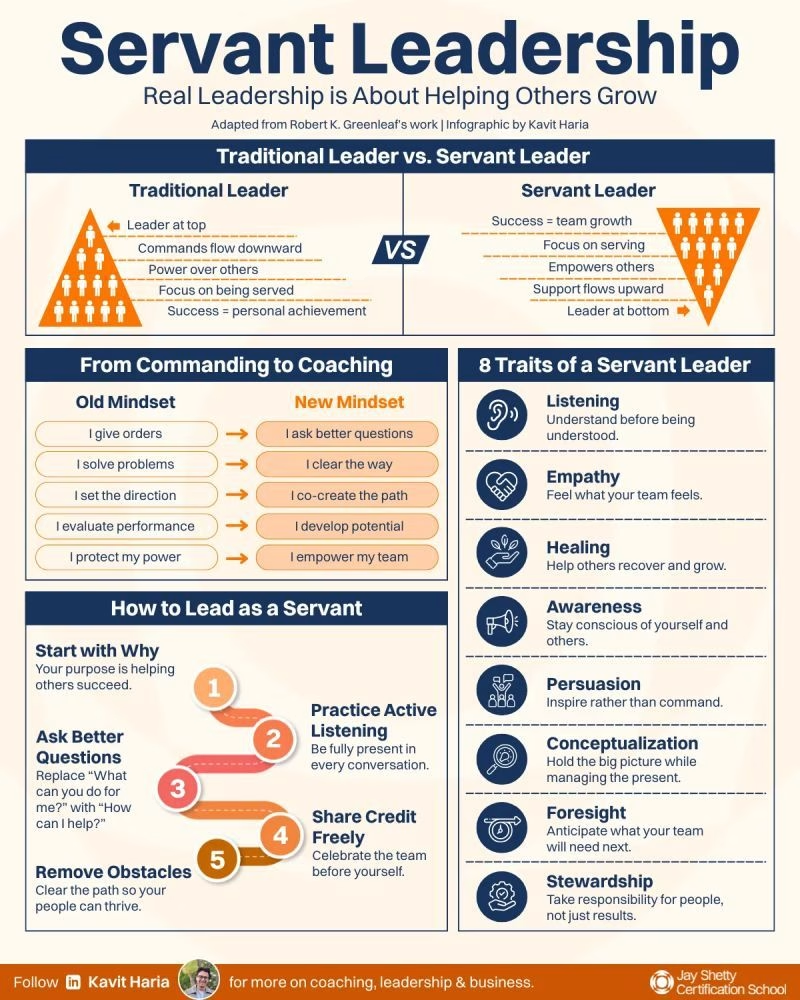
Servant Leadership is a powerful leadership philosophy that emphasizes serving others first. Rather than focusing on power or authority, servant leaders prioritize the growth, well-being, and success of their team members. This approach, popularized by Robert K. Greenleaf, is grounded in empathy, listening, and empowerment — creating a culture where people feel valued, trusted, and inspired to perform at their best.
The pros: a highly-effective leadership model
Servant Leadership stands out as a highly effective model because it fosters collaboration, innovation, and long-term engagement. By putting people before profit, servant leaders build strong relationships and promote a shared sense of purpose. Employees who feel supported and heard are more motivated, creative, and loyal — leading to higher retention rates and better overall performance.
Servant Leadership also aligns closely with modern workplace values such as inclusivity, emotional intelligence, and ethical decision-making. It encourages leaders to lead with humility and authenticity, which strengthens trust and accountability across teams. This people-centered approach not only improves morale but also drives sustainable organizational success.
The cons: challenges for servant leadership
- Slower Decision-Making – Because servant leaders seek input from others and prioritize collaboration, decisions can take longer. In fast-paced or high-pressure environments, it can slow decision-making unless there are clear escalation processes.
- Risk of Overemphasis on Others – Servant leaders often put the needs of their team ahead of their own or the organization’s. This can lead to burnout, blurred boundaries, or neglect of strategic priorities if balance isn’t maintained.
- Difficult to Implement in Hierarchical Cultures – In traditional or competitive organizations, servant leadership may clash with established power structures. Some employees or executives might view a servant leader’s humility as weakness or indecisiveness.
- Requires High Emotional Intelligence – Not every leader has the self-awareness, empathy, and communication skills needed to lead effectively through service. Without these traits, attempts at servant leadership can feel insincere or inconsistent.
- Potential for Misuse – Some team members may take advantage of a servant leader’s supportive nature, leading to uneven workloads or diminished accountability if not managed carefully.
- Challenging in Crisis Situations – In emergencies that require authoritative decision-making, a consensus-driven approach may delay necessary action.
Should you do it?
Servant Leadership offers a refreshing alternative to top-down management. It transforms leaders from bosses into mentors, guiding teams through influence rather than control. Servant leaders foster a culture of service, collaboration, and respect. Organizations can unlock the full potential of their people by outlining expections, empowering them to lead and providing clear escalation and decision-making processes, particularly for crisis or emergency sitituations.
Ultimately, leaders are accountable for what their teams do regardless of their leadership approach.
Leave a Reply